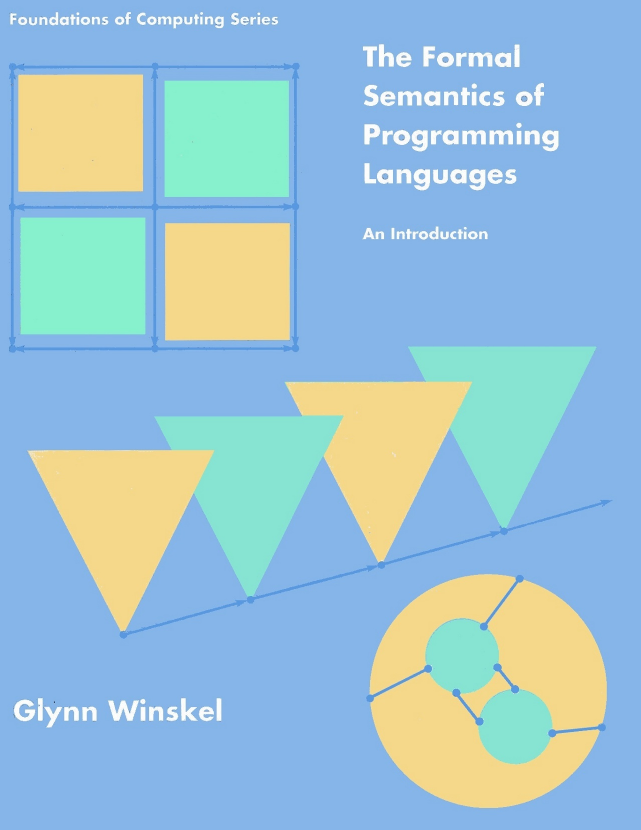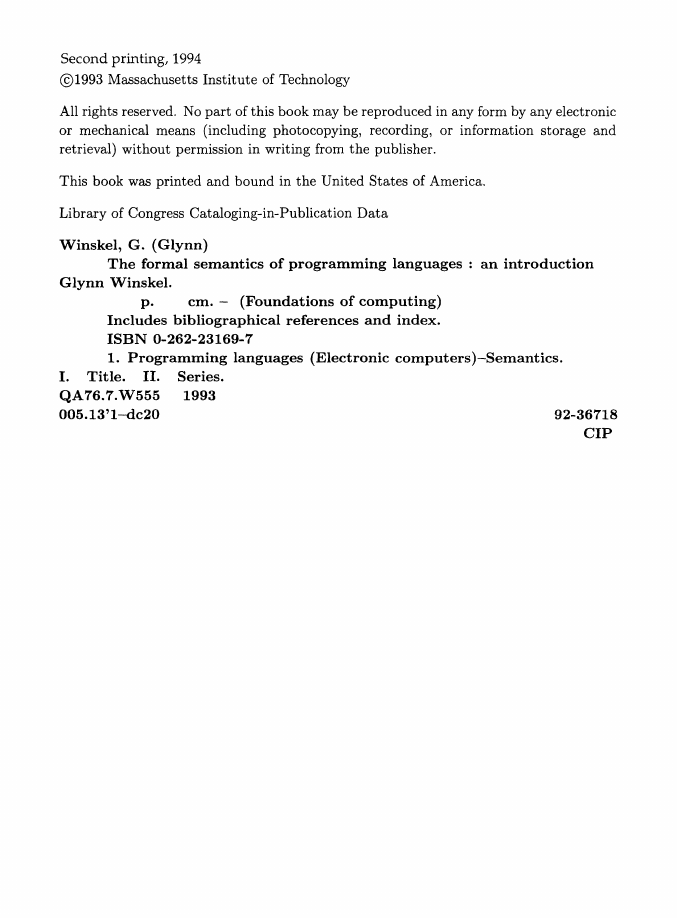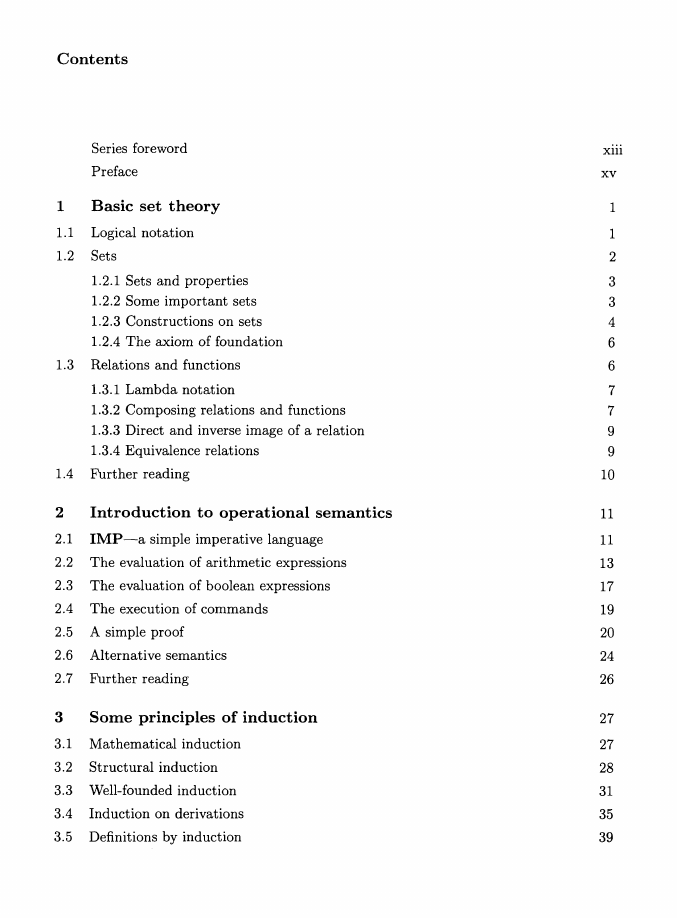�
Foundations of Computing
Michael Garey and Albert Meyer, editors
Complexity Issues in VLSI: Optimal Layouts for the Shuffle-Exchange Graph and Other
Networks, Frank Thomson Leighton, 1983
Equational Logic as a Programming Language, Michael J. 0 'Donnell, 1985
General Theory of Deductive Systems and Its Applications, S. Yu Maslov, 1987
Resource Allocation Problems: Algorithmic Approaches, Toshihide Ibaraki and Naoki
Katoh, 1988
Algebraic Theory of Processes, Matthew Hennessy, 1988
PX: A Computational Logic, Susumu Hayashi and Hiroshi Nakano, 1989
The Stable Marriage Problem: Structure and Algorithms, Dan Gusfield and Robert
Irving, 1989
Realistic Compiler Generation, Peter Lee, 1989
Single-Layer Wire Routing and Compaction,F. Miller Maley, 1990
Basic Category Theory for Computer Scientists, Benjamin C. Pierce, 1991
Categories, Types, and Structures: An Introduction to Category Theory for the Working
Computer Scientist, Andrea Asperti and Giuseppe Longo, 1991
Semantics of Programming Languages: Structures and Techniques, Carl A. Gunter, 1992
The Formal Semantics of Programming Languages: An Introduction, Glynn Winskel,
1993
�
The Formal Semantics of Programming Languages
An Introduction
Glynn Winskel
The MIT Press
Cambridge, Massachusetts
London, England
�
Second printing, 1994
©1993 Massachusetts Institute of Technology
All rights reserved. No part ofthis book may be reproduced in any form by any electronic
or mechanical means (including photocopying, recording, or information storage and
retrieval) without permission in writing from the publisher.
This book was printed and bound in the United States of America.
Library of Congress Cataloging-in-Publication Data
Winskel, G. (Glynn)
The formal semantics of programming languages : an introduction
Glynn Winskel.
p.
cm. -
(Foundations of computing)
Includes bibliographical references and index.
ISBN 0-262-23169-7
1. Programming languages (Electronic computers )-Semantics.
II. Series.
1. Title.
QA76.7.W555
005.13'1--dc20
1993
92-36718
CIP
�
To Kirsten, Sofie and Stine
�
�
Contents
Series foreword
Preface
1 Basic set theory
1.1 Logical notation
1.2 Sets
1.2.1 Sets and properties
1.2.2 Some important sets
1.2.3 Constructions on sets
1.2.4 The axiom of foundation
1.3 Relations and functions
1.3.1 Lambda notation
1.3.2 Composing relations and functions
1.3.3 Direct and inverse image of a relation
1.3.4 Equivalence relations
1.4 FUrther reading
2
Introduction to operational semantics
IMP-a simple imperative language
2.1
2.2 The evaluation of arithmetic expressions
2.3 The evaluation of boolean expressions
2.4 The execution of commands
2.5 A simple proof
2.6 Alternative semantics
2.7 FUrther reading
3
Some principles of induction
3.1 Mathematical induction
3.2 Structural induction
3.3 Well-founded induction
3.4
Induction on derivations
3.5 Definitions by induction
xiii
xv
1
1
2
3
3
4
6
6
7
7
9
9
10
11
11
13
17
19
20
24
26
27
27
28
31
35
39
�
















 2023年江西萍乡中考道德与法治真题及答案.doc
2023年江西萍乡中考道德与法治真题及答案.doc 2012年重庆南川中考生物真题及答案.doc
2012年重庆南川中考生物真题及答案.doc 2013年江西师范大学地理学综合及文艺理论基础考研真题.doc
2013年江西师范大学地理学综合及文艺理论基础考研真题.doc 2020年四川甘孜小升初语文真题及答案I卷.doc
2020年四川甘孜小升初语文真题及答案I卷.doc 2020年注册岩土工程师专业基础考试真题及答案.doc
2020年注册岩土工程师专业基础考试真题及答案.doc 2023-2024学年福建省厦门市九年级上学期数学月考试题及答案.doc
2023-2024学年福建省厦门市九年级上学期数学月考试题及答案.doc 2021-2022学年辽宁省沈阳市大东区九年级上学期语文期末试题及答案.doc
2021-2022学年辽宁省沈阳市大东区九年级上学期语文期末试题及答案.doc 2022-2023学年北京东城区初三第一学期物理期末试卷及答案.doc
2022-2023学年北京东城区初三第一学期物理期末试卷及答案.doc 2018上半年江西教师资格初中地理学科知识与教学能力真题及答案.doc
2018上半年江西教师资格初中地理学科知识与教学能力真题及答案.doc 2012年河北国家公务员申论考试真题及答案-省级.doc
2012年河北国家公务员申论考试真题及答案-省级.doc 2020-2021学年江苏省扬州市江都区邵樊片九年级上学期数学第一次质量检测试题及答案.doc
2020-2021学年江苏省扬州市江都区邵樊片九年级上学期数学第一次质量检测试题及答案.doc 2022下半年黑龙江教师资格证中学综合素质真题及答案.doc
2022下半年黑龙江教师资格证中学综合素质真题及答案.doc